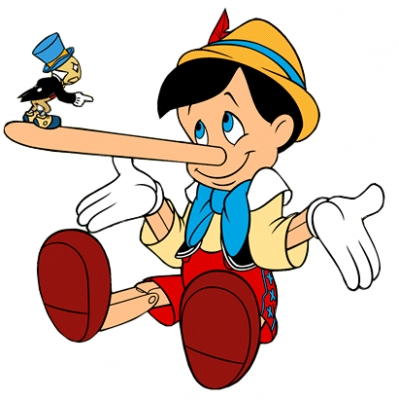Chapter 7: True or False (Pinocchio)

The computer is like a truth machine: you can ask it something and it will tell you whether it is true or false.
Unlike Pinocchio, the computer never lies.

True or false?
When you write a statement to the computer, the computer answers you by true or false:
truemeans that your statement is truefalsemeans that your statement is false
Today, we are going to learn about three kind of statements:
=: a statement that two things are equal>: a statement that the first thing is greater than the second thing<: a statement that the first thing is less than the second thing
For instance, it is true that 2 and 2 equals 4:
(= (+ 2 2) 4)
It is also true that 7 times 8 is 56:
(= (* 7 8) 56)
But it is false that 5 times 6 is 31:
(= (* 5 6) 31)
Can you modify the statement above and make it true?
It is true that 5 times 7 is greater than 10:
(> (* 5 7) 10)
But it is false that 2 times 2 is greater than 100:
(> (* 2 2) 100)
Can you modify the statement above and make it true?
Exercises
A. Ask the computer if it is true that 7 times 6 equals 40:
()
You should get false.
B. Is it true that 5 and 7 is less than 13?
()
You should get true.
C. Is it true that 3 times 4 is 12?
()
You should get true.
D. Is it true that 3 times 6 equals 10 and 8?
()
You should get true.
E. Is it true that 7 times 7 is greater than 10 times 6?
()
You should get false.
Send us a screenshot with your programs to viebel@gmail.com.